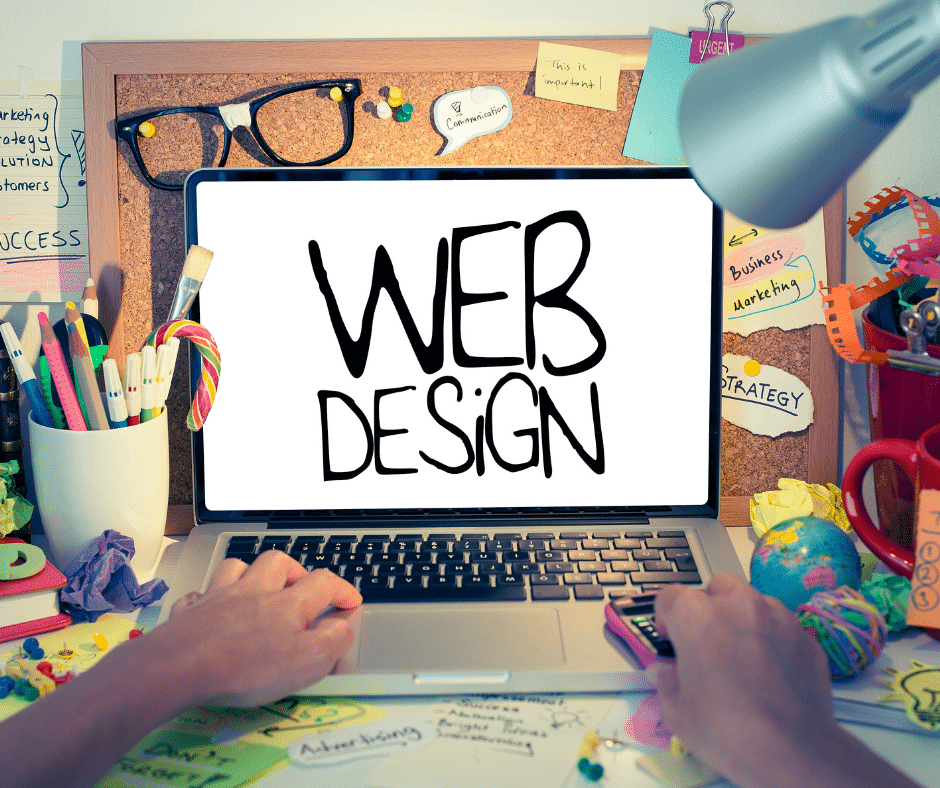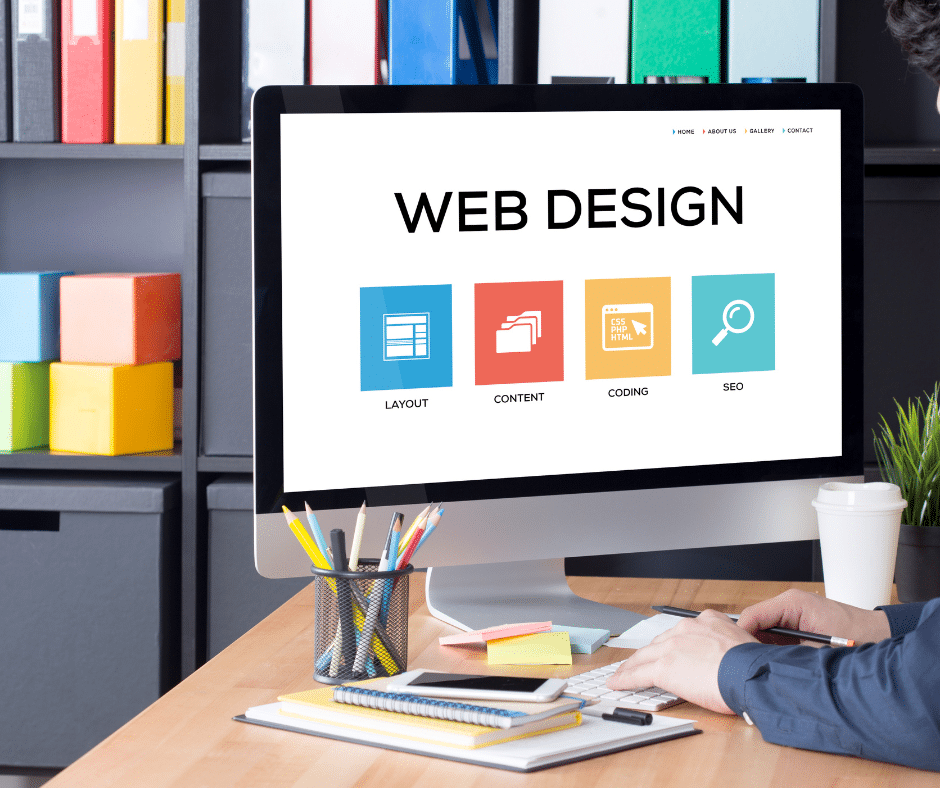
Web DesignWeb design involves the creation of websites and web pages that reflect a company’s brand and information, while providing a user-friendly interface. Appearance and design are crucial elements that are integrated in the design process. There are many avenues you can choose from when it comes to web development, whether you want to build your own site or become a professional web designer designing sites for others. In this article, we’ll provide a basic understanding of what web designing is, and what its main elements and uses are.
What Do Web Designer Developers Do?
As part of the web design process, web designer developers must identify the objectives of the website or webpage and make sure that it is accessible to all potential visitors. When choosing the best web design company in Las Vegas, keep in mind that the professionals responsible for performing this process are called web designers. Some of their key responsibilities include:
1. Choosing easy-to-read fonts
2. Making the color scheme attractive and the font easier to read
3. Designing colors, fonts, and layouts with the brand’s identity in mind
4. Creating a map of the website’s structure to ensure intuitive navigation
5. Placing image, logo, text, video, applications, and other elements
6. Creating layouts and styles using coding languages, such as HTML and CSS
7. Optimizing website and page versions for mobile and desktop
The two most common methods of web design are adaptive and responsive. The website layout and content are designed in such a way that standard screen sizes are used as the frames for the layout in an adaptive design. In responsive design, the content moves dynamically based on the size of the screen.
During the process of designing a website, a web design company uses various steps as part of the general web development process to determine how to best apply the various design methods based on the preferences and goals of their client or employer.
What Are the Elements of Web Design?
Web designers are able to provide effective solutions and are able to adapt to any preferences as a result of the web design process. Almost every web design company has a number of standard components, such as the following:
1. Layout
2. Images
3. Visual hierarchy
4. Color scheme
5. Typography
6. Readability
7. Navigation
8. Content
9. Mobile
Layout refers to how the content of a web design is organized and displayed on a particular webpage. In order to create a successful design, the designer has to choose the layout carefully to make it as simple, intuitive, and accessible as possible. Mobile-friendly web design is a necessity, since many visitors access websites using their cellphones or tablets.
When a non-desktop device connects to a website, a mobile-only look will activate to ensure it is mobile-friendly. A responsive template will adapt to various screen sizes when a non-desktop device connects to the website. The visitors are more likely to trust a site if the layout is consistent between the supports.
Effective Schemes
An image is any type of illustration that contributes supplementary information to the text. A designer can choose images that compliment each other and the brand that is represented on the website in order to create the desired effect.
In the case of a website, the visual hierarchy represents the order in which the information will be processed by the user. Usually, when a new website is created, a visual pattern is applied to it by the designer. An important aspect of the design is the way it directs visitors’ eyes and behaviors in response to the design. The best web design company in Las Vegas will exactly how this works.
An effective color scheme is a combination of colors that reflects the brand’s identity as well as its industry, which makes it compatible with the brand. A palette of colors will be designed based on a dominant color and a few other colors to achieve this outcome. A designer should also take into account what colors users are most likely to be attracted to when it comes to their designs.
A typographic style can be described as a style or font for a written piece of content. Choosing a font that corresponds to the target audience is the best way for designers to make the right choice. Serif fonts are generally recommended for some sites, while non-serif fonts may be more appropriate for others, depending on the industry, purpose, and typical user of the site.
Readability
On a webpage, readability refers to how easy it is to read the text of the content. Since visitors usually spend little time on websites, they should be able to read the text and find information quickly. Choosing the right font size, spacing, and color contrast is critical to making content readable. Designers must also ensure that the text is not too cluttered and that there is adequate white space around it.
Navigation
Navigation is a critical element of web design as it enables visitors to move around the site and find what they need quickly. Navigation can be achieved using a menu bar, buttons, tabs, or links. Designers must ensure that navigation is easy to use and intuitive, with clear labels and logical organization.
Content
Content is the backbone of any website and includes text, images, videos, and other media. The content must be well-written, informative, and engaging to keep visitors interested and to drive conversions. Designers must ensure that the content is presented in a way that is easy to read and navigate, with clear headings, subheadings, and bullet points.
Mobile
With more and more people accessing the internet on their mobile devices, it is crucial that websites are mobile-friendly. Designers must ensure that the website is optimized for mobile devices, with a responsive design that adapts to different screen sizes. This includes using mobile-friendly layouts, font sizes, and navigation.
In conclusion, web design is a critical component of any online presence, with its primary objective being to create an engaging, user-friendly experience that reflects the brand’s identity. From layout and typography to color scheme and navigation, each element of web design plays an important role in ensuring the success of a website.
Whether you are designing your own website or working with a professional web design company, understanding the basic elements and uses of web design will help you create a successful online presence. Remember, the key is to keep it simple, intuitive, and user-friendly, and having the best web design company in Las Vegas at your side couldn’t hurt either 😉
To summarize, here are the key takeaways from this article:
Web design involves creating websites and pages that reflect a company’s brand and information while also ensuring a user-friendly interface. Web designers use a variety of elements such as layout, images, typography, readability, navigation, content, and mobile optimization to achieve their goals. Web design is essential for a successful online presence and should be kept simple, intuitive, and user-friendly.
Designers must ensure that websites are optimized for mobile devices, with a responsive design that adapts to different screen sizes. Choosing the right font, color scheme, and visual hierarchy can have a significant impact on the effectiveness of a website. Navigation is a critical element of web design as it enables visitors to move around the site and find what they need quickly. WebExpertUS.com is one of the best web design company in Las Vegas, and we’re ready to help you get started.

